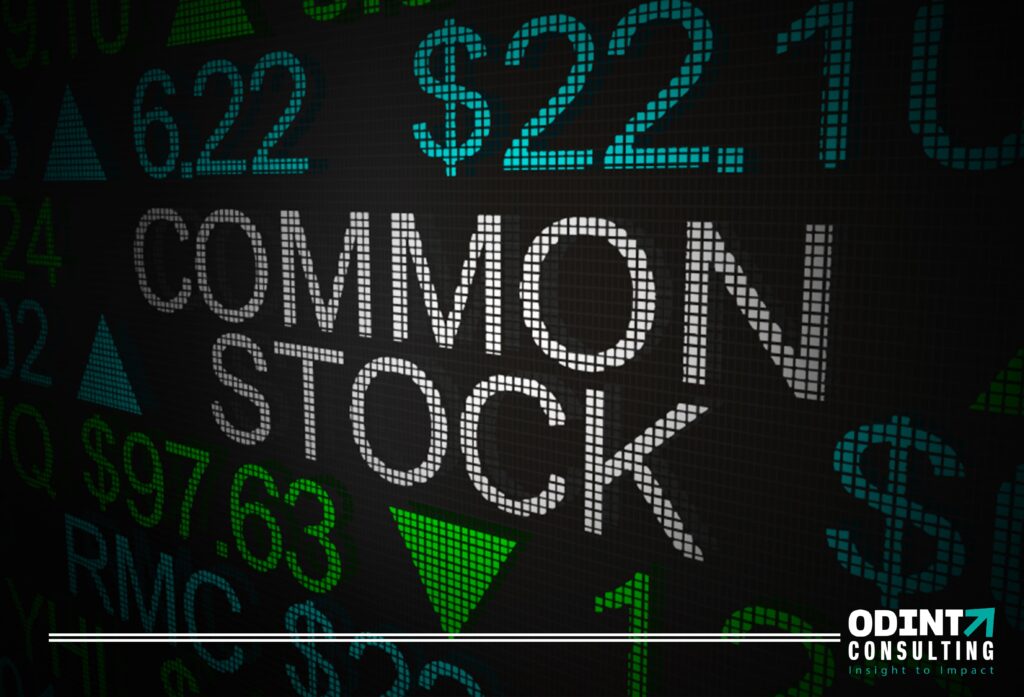
What Are Common Stocks?
The securities that exemplify a person’s ownership in a firm and their hold on the firm’s accrued revenues are known as common stocks. This stock feature gives a chance to people to pick the firm’s directorial board and later provides them voting rights to constitute business policies.
Generally, in the long run, common stocks are known to create high rate returns. The holders of common stocks are compensated via dividend salary which is given to them after delivering the accrued gain to the shareholders of preference.
If there is a situation of insolvency, creditors, bondholders, and preferred shareholders are most likely to get the outstanding assets only once others have gotten theirs. These kinds of stocks are filed in the market via an IPO (initial public offering).
Common shares:
Number of remaining shares = Filed shares – Treasury stocks
Why Common Stocks Are Issued?
Usually, the filing of common shares is an alternate choice for trading the debt bonds or filing the preference shares. The main reason why common stocks are issued is that they help in building capital. This raised capital can benefit in the following ways:
- Formation of a promising firm
- Expansion of business
- Building a cash reserve for future
- For clearing debts
The filing of common shares has the tendency to dilute the claiming strength of the already existing stakeholders. This is the reason why firm owners are usually focused and like to consider all the dos and don’ts of common stock issuance, before coming to any conclusion.
Features Of Common Stocks
The common stocks bear a lot of features. Some of them are explained below:
Investment option
Usually, people can invest in common stocks using the below-mentioned ways:
- By stock exchange
- By a stock plan
- By mutual fund investment
- By dividend re-investment scheme
Stock Rights
The common shares provide some rights to their stakeholders. For example, people who put funds in such stocks get to enjoy the following rights:
- Voting rights – gives the power to pick the directorial board
- Dividend rights – ability to make dividends
- Pre-emptive rights – receiving consideration
- Asset rights – getting outstanding assets in case of insolvency
Returns
These stocks let their stakeholders make earnings in mainly 2 ways:
- By capital gains
- By dividend income
The stakeholders get huge capital raise once the firm’s share valuation enhances. So, if the firm is only left with considerable revenue after submitting all the maintenance fees and other costs, it should proclaim dividends for its stakeholders.
Read More: Types Of Mutual Funds In India
Who Should Invest In Common Stocks
Because common stocks come with a considerable amount of risk, they might not be the best option for risk-averting investors. Plus, the cost of such stocks is volatile and therefore fluctuates easily. Still, common stocks have a considerable potential to grow, and investors can make use of this fact and invest in common stocks for a longer time. Therefore, it can be concluded that investors with a solid risk appetite and a good eye for investment can invest in common stocks.
Benefits Of Common Stocks

Here is a list of all the perks of common stocks:
1. Potential Revenue
When talking about the success rate, common stocks are famous for rendering good returns than bonds, deposit certificates, etc amongst other tools of investment. Plus, there isn’t any restriction or limitation that which stakeholders can take advantage of their investment.
So, common stocks are known to be more reliable and less costly as compared to debts. The reason is that the firms don’t have to submit the paid interest to the stakeholders and can pick a reward when getting excess revenue.
2. Voting Power
Every investor is entitled to have one vote per share of his claimed common stock. It is to be noted that these rights comply with financial policies and have a say in corporate decisions. For example, stakeholders have the right to pick their firm’s directorial board by their right to vote or can also decide the future of a business policy. Generally, stakeholders with significant common shares can easily make use of this power.
3. Gains
Although common investors are eligible for a dividend, the regularity of such a return is unpredictable. For example, a company’s performance may be insufficient to pay dividends to its stockholders. Conversely, a corporation may choose to deposit its revenues back into the endeavor to expand. All of these factors make the possibility of earning profits questionable. Nonetheless, as compared to alternative investment choices, common shareholders are more capable to attain considerable returns.
4. Restricted legal obligations
Common shares investors’ responsibilities are also limited because they are passive owners. They don’t have to be worried about occurrences that occur outside of financial investing. Furthermore, such shares ensure a secure financial future if a company generates considerable profits and grows at a consistent rate.
Furthermore, shareholders are not subjected to the danger of losing additional cash than they committed. Each of these factors tends to assist investors in capitalizing on the additive process of common shares without becoming entangled in unjustified legal responsibilities.
5. Liquidity
Because common shares are fluid, shareholders can effectively engage in or relinquish them. It enables investors to purchase more stocks and grow their stake in a specific firm. Likewise, if their venture is not lucrative yet, they can just renounce it. Furthermore, such stocks can be acquired at a reasonable cost without any problems, making them a suitable investment instrument for many.
Limitations Of Common Stocks
With advantages come a lot of added limitations. So, here is a list of limitations of common stocks:
Lack of control
Common stocks are beneficial if the business plan and policies are appropriately planned and executed. The investors don’t have control over it. So, if the investors don’t have a say in the business plan creation or if they can’t edit the firm’s book of accounts, this can easily be counted as a limitation.
Market-related threat
Because common stock values are vulnerable to market instability, stock price varies often. Furthermore, the pricing of common shares typically varies dramatically, making performance evaluation difficult. Furthermore, if there is a situation of liquidation, common investors are more likely to forfeit their invested capital.
Profits can’t be assured
Because market dynamics influence revenue production for this preferred stock, income is frequently variable. Whenever it comes to making money, there is no such assurance. It appears to be a substantial disadvantage for investors who engaged in common shares for the possibility of development.
Common Stocks vs Preferred stocks
Preference shares and ordinary stocks both signify participation in a certain corporation. Furthermore, both are effective strategies for creating big earnings. Nevertheless, there are distinct characteristics that distinguish fact from opinion in a variety of ways.
The following are some distinctions between preferred equities and common stocks:
- Preference stockholders do not have the right to vote when it is about the special benefits. That is, they have no significant role in developing a company’s critical policies or plans.
- When it pertains to distributing earnings to a firm’s shareholders, preferred owners are given higher priority. It implies that rewards would be distributed to common investors before dividends were paid to preference shareholders.
- Similarly, in the liquidation process, preference shareholders are compensated first, followed by regular shareholders. After all other investors have been compensated, common investors are paid using the leftover share of the property.
Common Stocks & Balance Sheet
Usually, details about a firm’s common shares are included in its Financial Statements under the headline of a shareholder’s accounting equation. Individuals attempting to calculate the market valuation, known colloquially as the total wealth of a firm’s shares, would benefit greatly from this area of the Financial Statements. Importantly, the stockholder’s capital is the valuation of a firm’s shares and serves to emphasize the inherent profitability of a firm. This figure aids in estimating how much stockholders would get in the event of a bankruptcy.
However, equities do not have to be exchanged at this level. Growing firms usually trade for multiple times their market valuation. Businesses that are suffering, on the other hand, may choose to market below the capital value of their shares.
Read More: Ledger Balance
Conclusion
Stocks ought to be a significant portion of any shareholder’s portfolio. When contrasted to bonds, preferred stock, and CDs, they carry a higher degree of risk. But the larger the danger, the higher the potential gain. Stocks beat other investments in the longer run, but they are more volatile in the short time frame. A commodity that symbolizes equity in a firm is common stock. The stockholders of Common stocks get whatever property remains after preferred stockholders, bondholders, and creditors have been paid in a bankruptcy.
So, now that we have covered all the important topics revolving around common stock such as what is meant by the term, why are they issued, its features, who is eligible to issue them, the benefits, and also the limitations, we hope that all your questions and doubts regarding the topic are solved.
FAQ’s
The individuals who own common stock are termed, equity stockholders or common shareholders.
It is deemed to represent the ownership shares of a firm and the kind of stock in which the majority of people invest.
Investors like to engage with common stocks as they wish to be a part of a firm’s growth and its increasing shares. As the revenue and profit go up, so does the cost of the stock shares.
